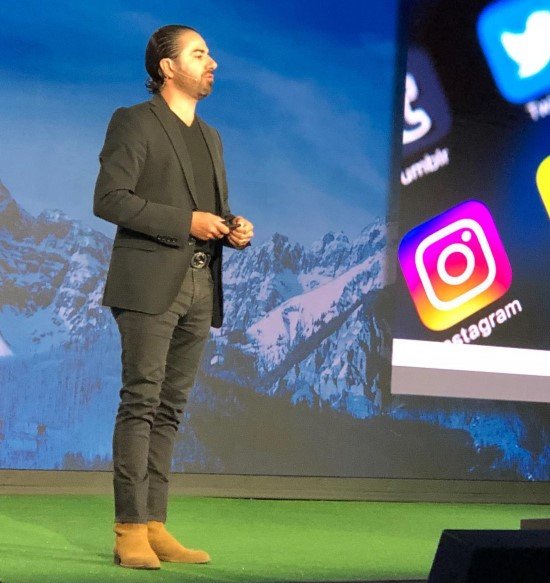Shaping a New Growth Model for Future Generations
It is an exciting time to be part of the dairy industry. Across the world, dairies are undergoing a profound transformation driven by challenges like the environment, animal welfare, consumer perceptions, and labor. A new modular approach to milk production using a hybrid of robotic and conventional milking methods is gaining momentum – and delivering sustainable, profitable growth.
 Francisco presenting a new growth model for dairy at Connect Summit 2019. Click here to watch.
Francisco presenting a new growth model for dairy at Connect Summit 2019. Click here to watch.
Today, cows in large dairies are grouped together to help make labor more efficient. This approach has been successful for the past several decades, but the game has changed. Traditional labor is no longer available. In addition, the consolidation of the dairies, their closeness to cities, and the amplification of consumers’ opinions on social media raises additional challenges like the lack of succession planning, poor consumer perceptions, and permitting and regulatory constraints.
To reverse the result of the status quo and help dairies achieve sustainable, profitable growth, what if:
- The traditional low-skilled labor scheme radically became a high-skilled labor system, where less but better employees dedicated their time to value-added jobs while automation does the rest?
- Eighty percent of the tasks related to 20 percent of the cow population occurred in a centralized, specialized location, while the other 80 percent of the herd enjoys a stress-free, low-labor input environment?
- Instead of hauling manure for several miles, nutrients are applied next to crops?
- Cows express their maximum genetic potential by milking as many times as they want?
- Cows’ rations are fine-tuned to their specific needs, including milk production?
- Consumers can’t differentiate between a 700- or 70,000-cow dairy?
- Consumers invest in the production of their own food and energy?
- Start-up companies and dairy entrepreneurs don’t need to grow overnight to be sustainable, but they can do it incrementally as they generate profits?
- Producers take advantage of current, existing overhead costs and expand with marginal labor, so they can harvest the cheapest milk?
- We think differently?
In disrupting the current milk production model, a good starting point begins with the fact that many dairy farmers own their milking facilities. In applying a Hybrid philosophy to these operations, their current Conventional Milking facility becomes the Matrix serving the Nucleus Herd. Here, 80 percent of the transition period, hospital and ration mixing work would take place, including the prep and exportation of healthy, trouble-free rations for highly productive cows. Existing rotaries and parlors maximize their efficiency with stand-alone, fast ROI technologies, like DeLaval teat spray robot TSR. Instead of using parlors 24/7, we use them a couple of hours a day. The same crew that manages fresh cows, may also milk them.
Once cows and rations are ready, then they would move to the Robotic Modules of the dairy operation where at least three full-time equivalents (FTEs)) managing 840 cows and 12 milking robots could deliver a load of milk per day. These self-contained robotic modules could house 80 percent of the entire cow population under the care of only 20 percent of available labor.
The objectives of this 80/20 approach are:
- Simplicity delivers maximum efficiency resulting in top productivity.
- Cows achieve their genetic potential.
- Highly skilled employees manage top-performing cows.
- Nutrients are next to crops.
- Regulations and public perceptions are less of a concern.
In the end, the hybrid philosophy delivers a sustainable, profitable outcome helping us do more with less.